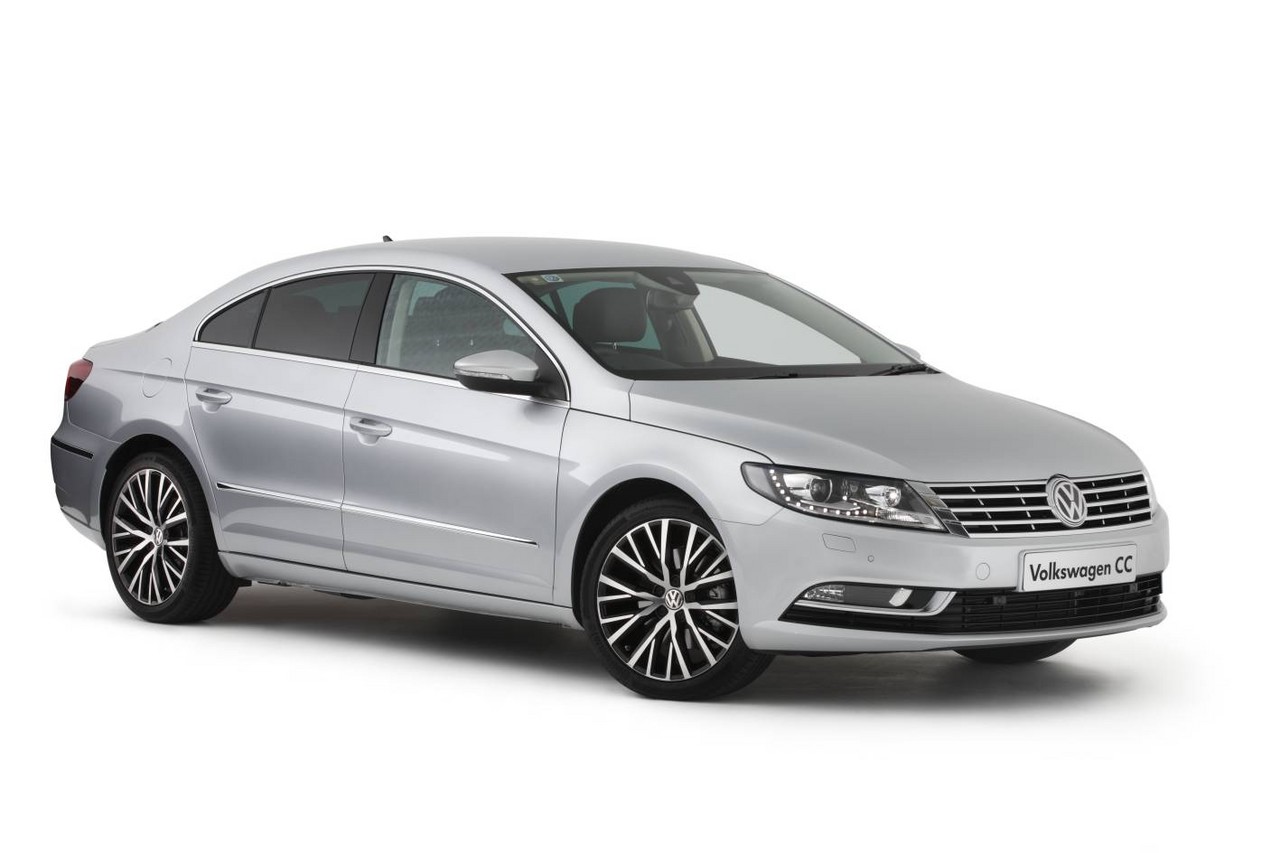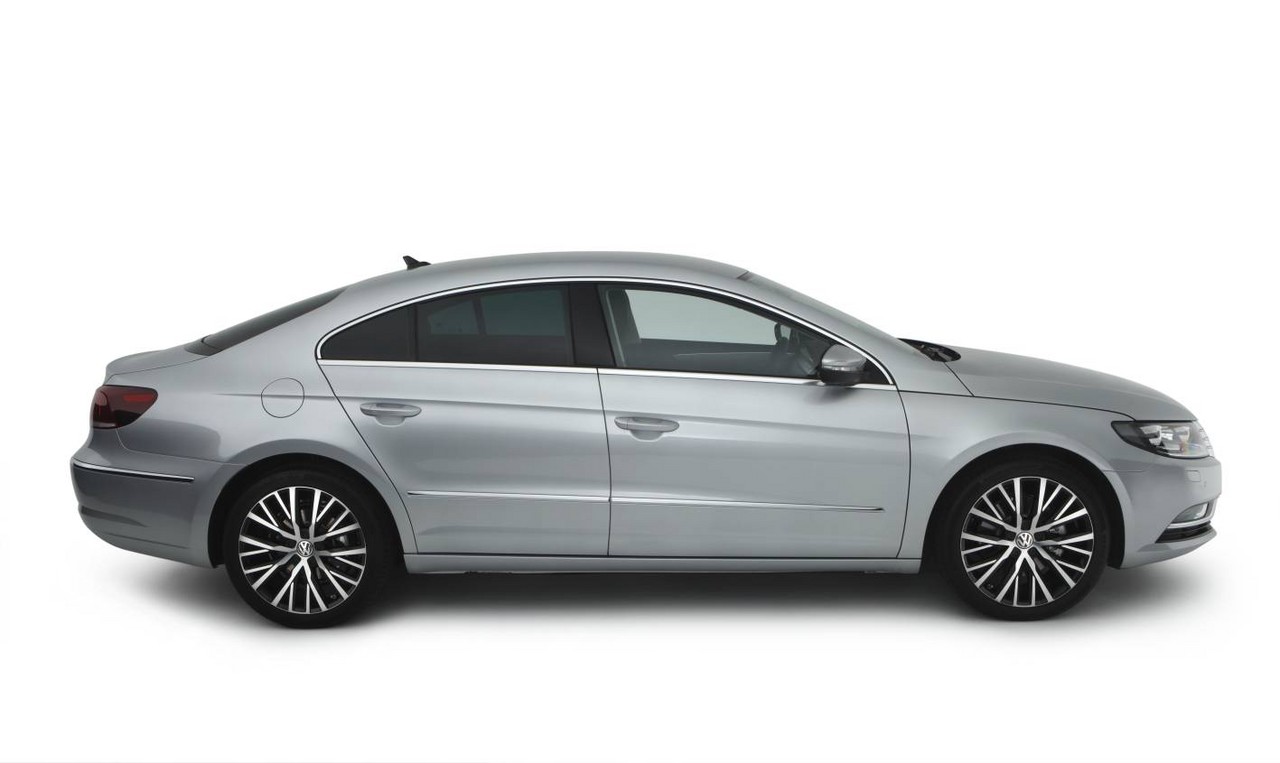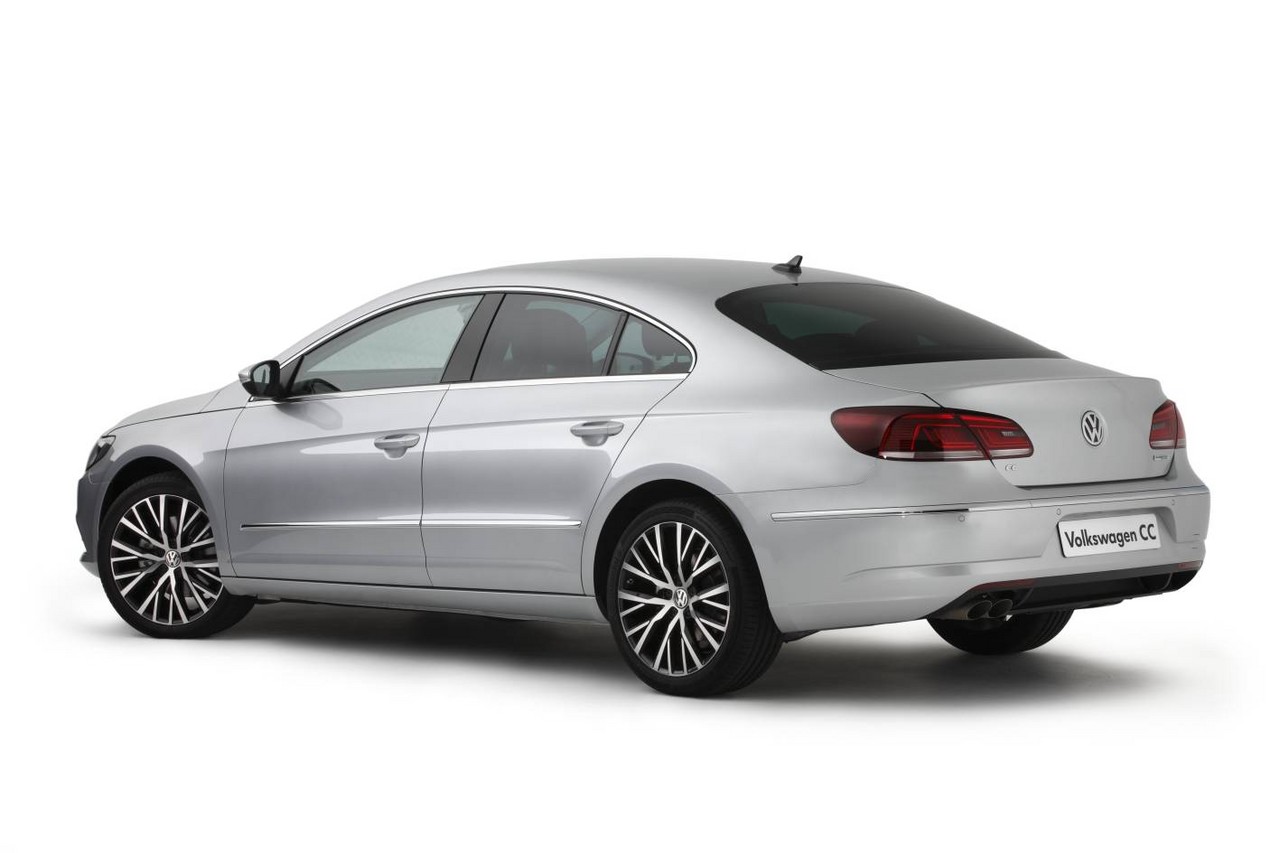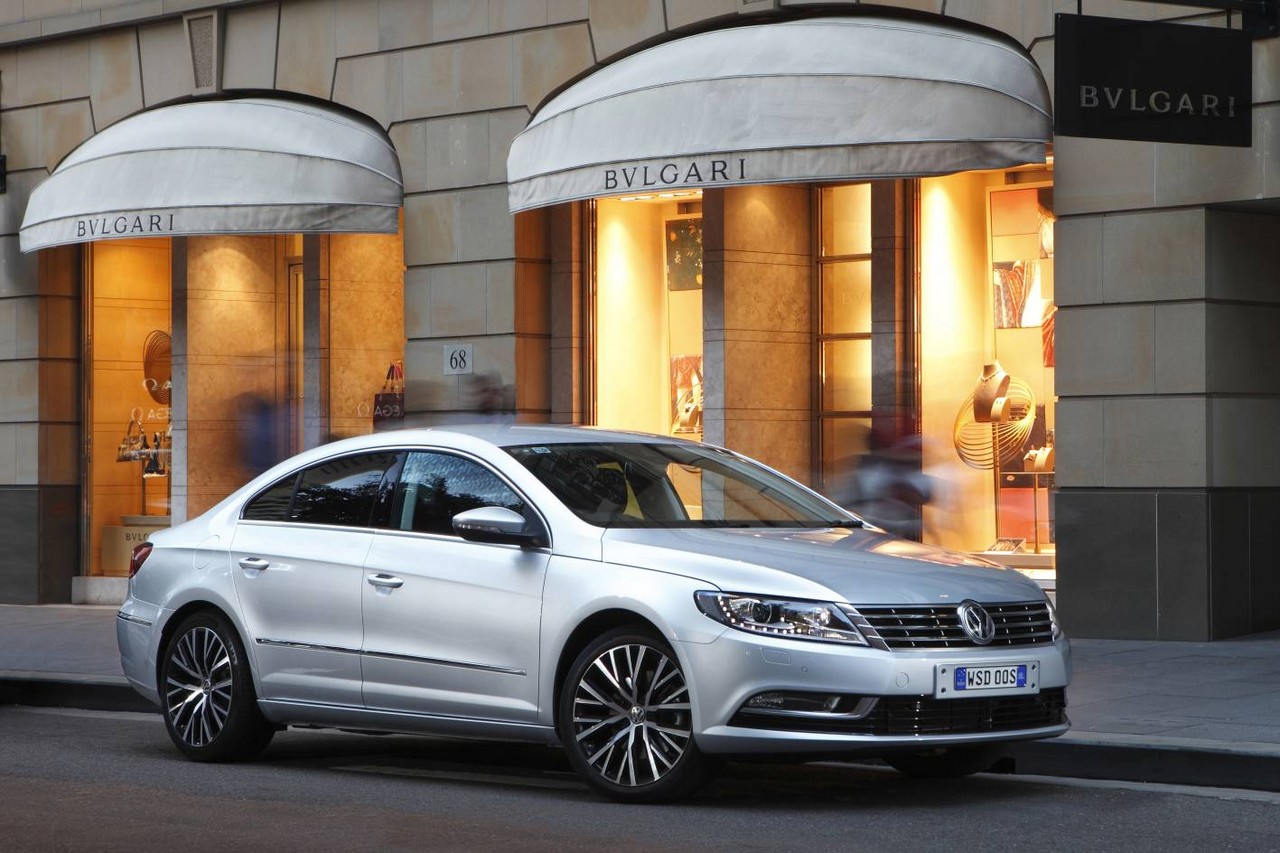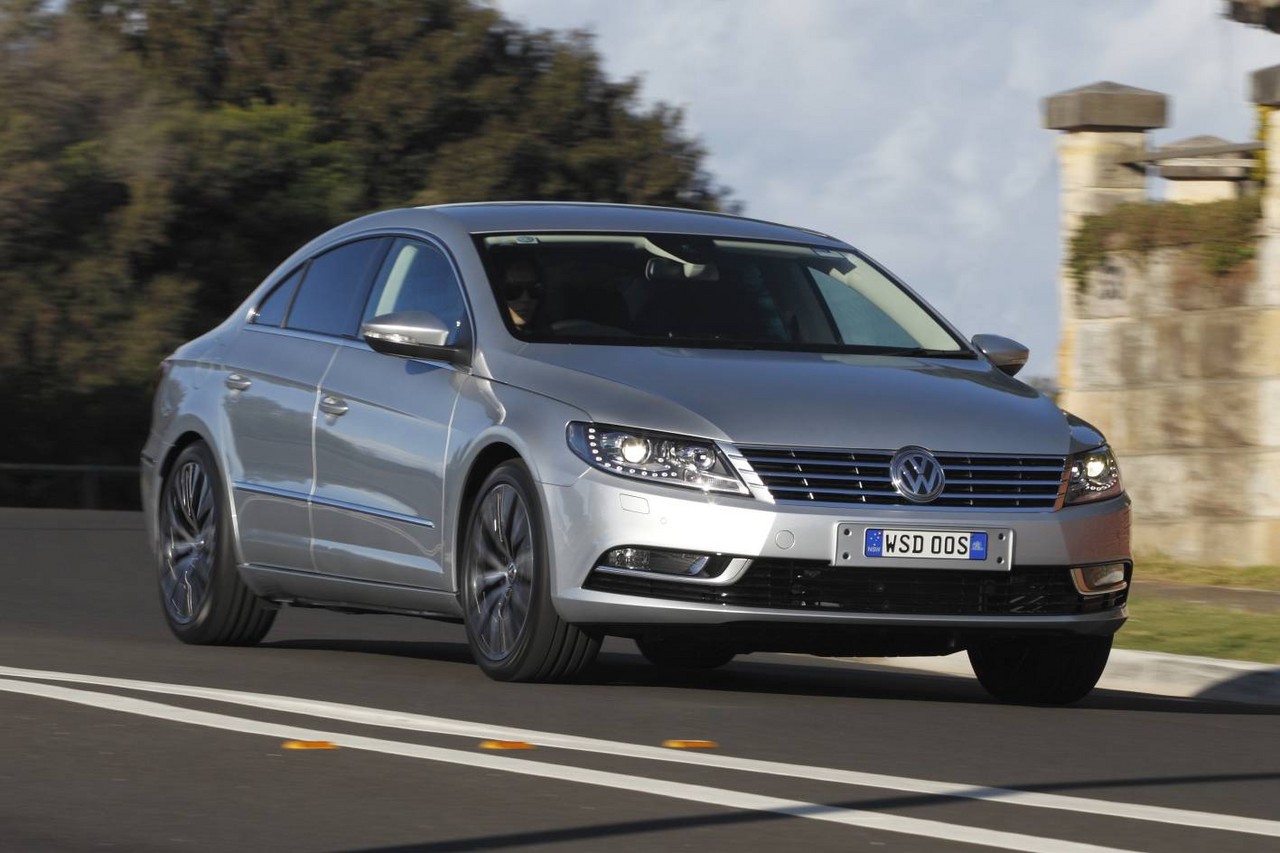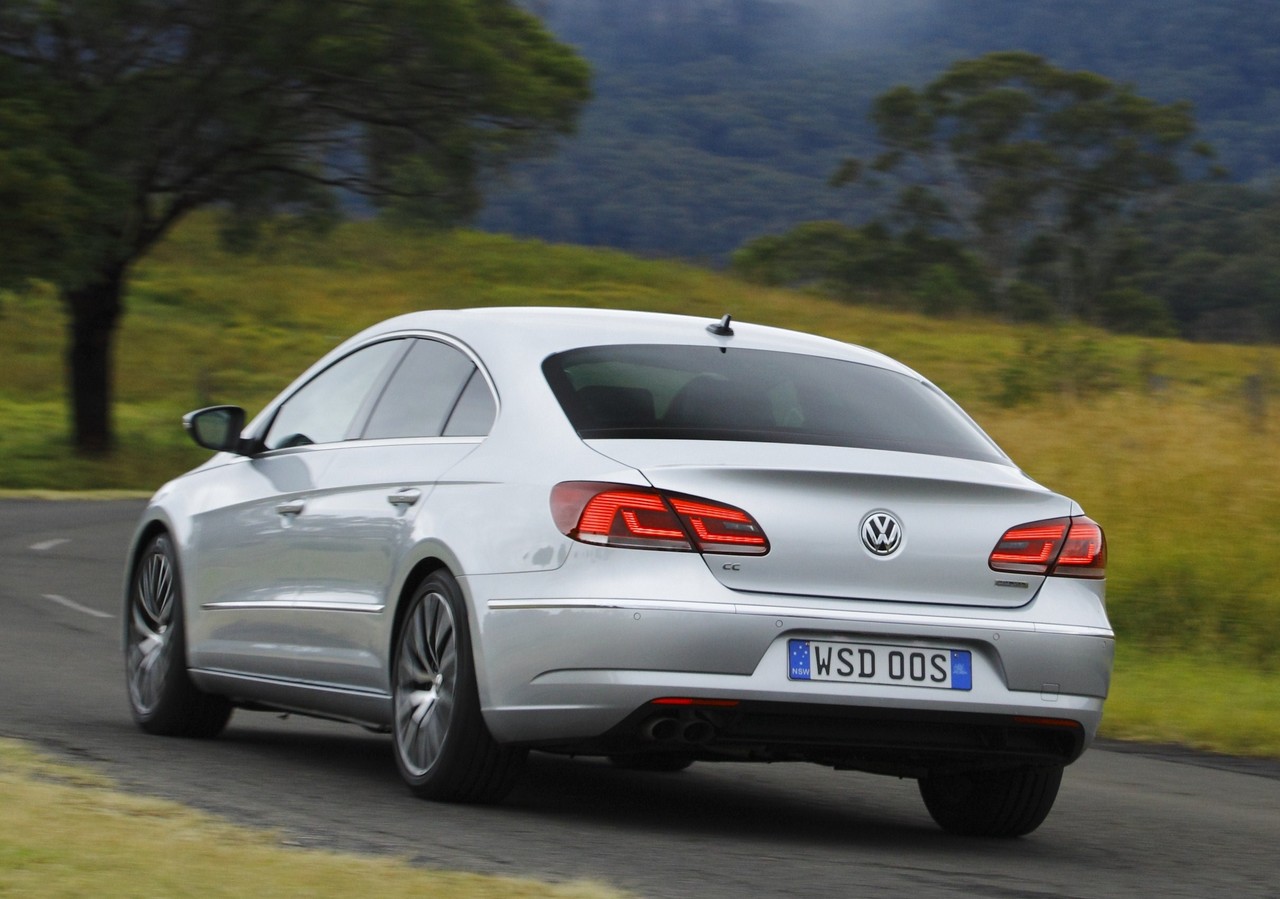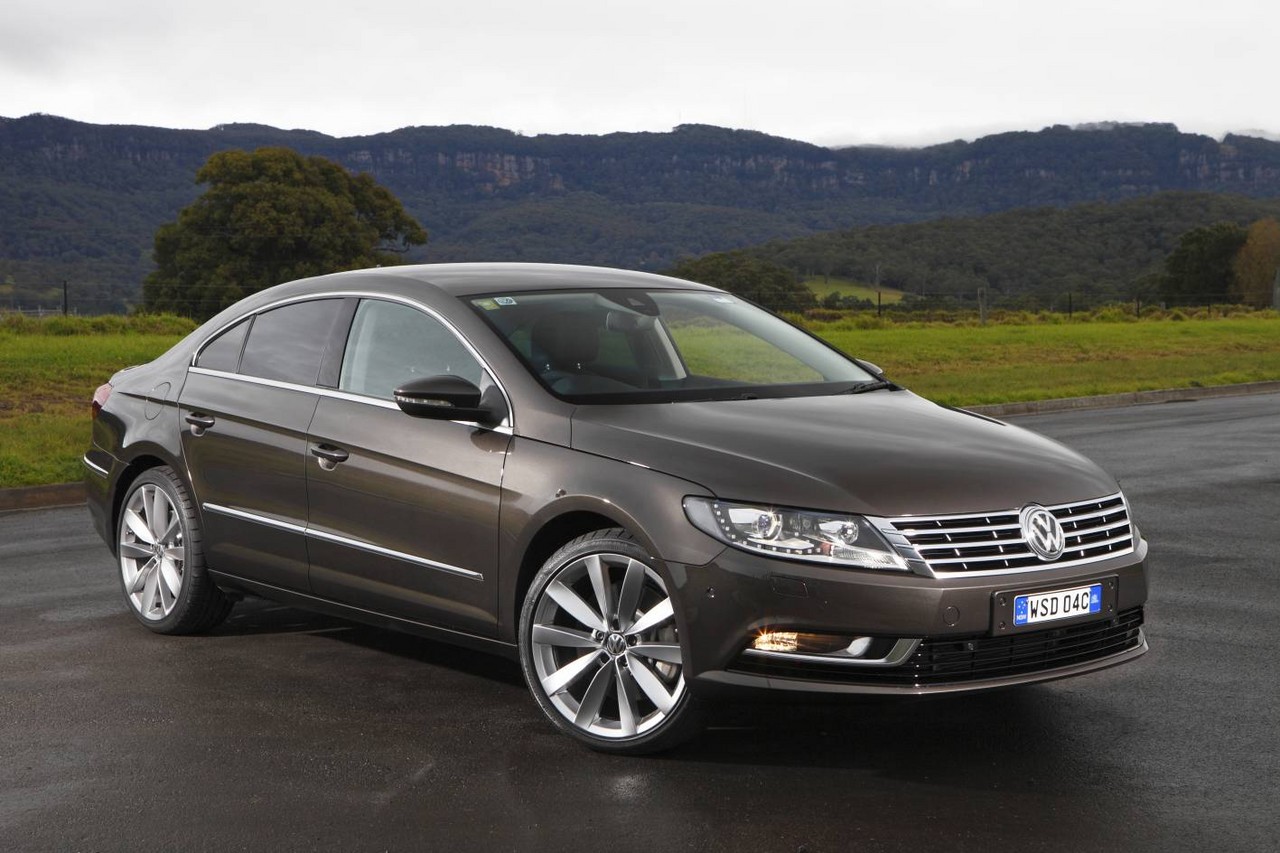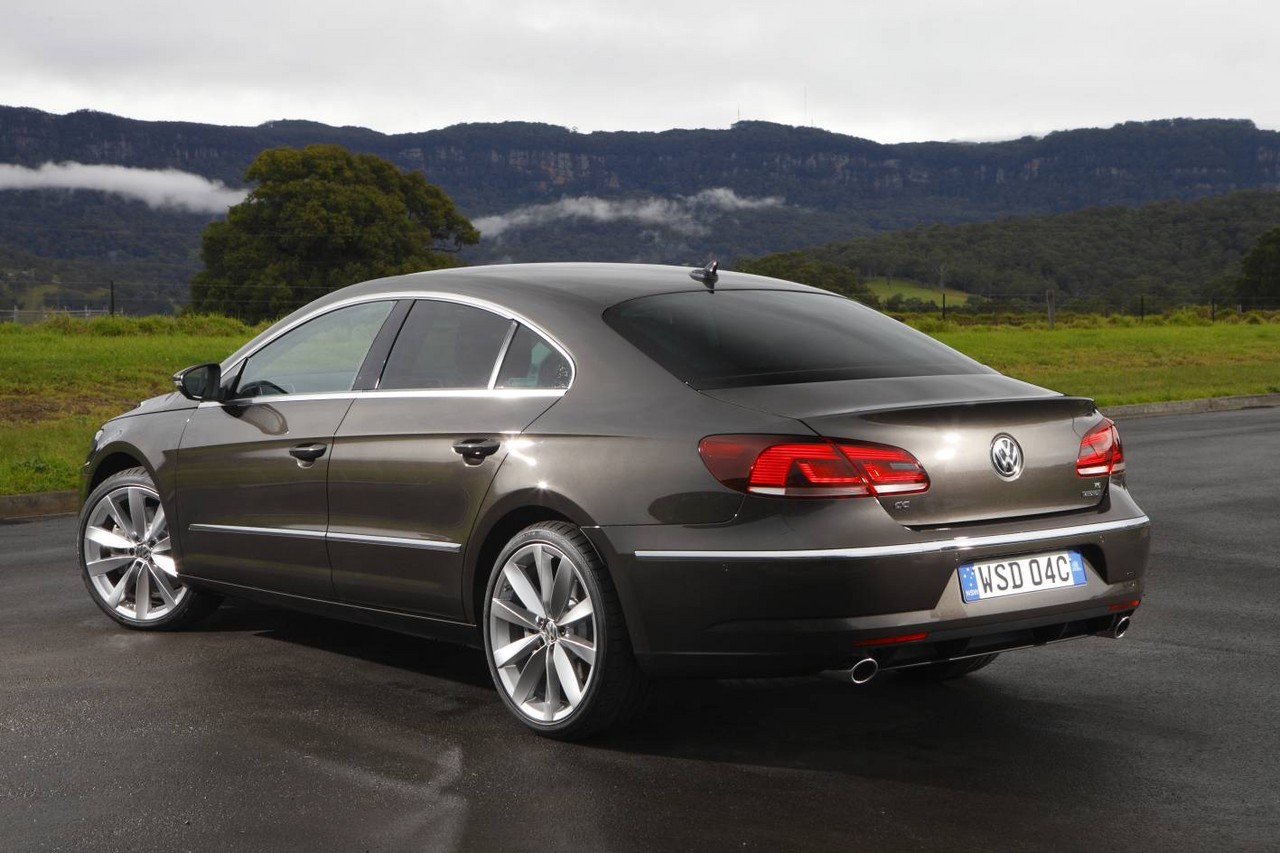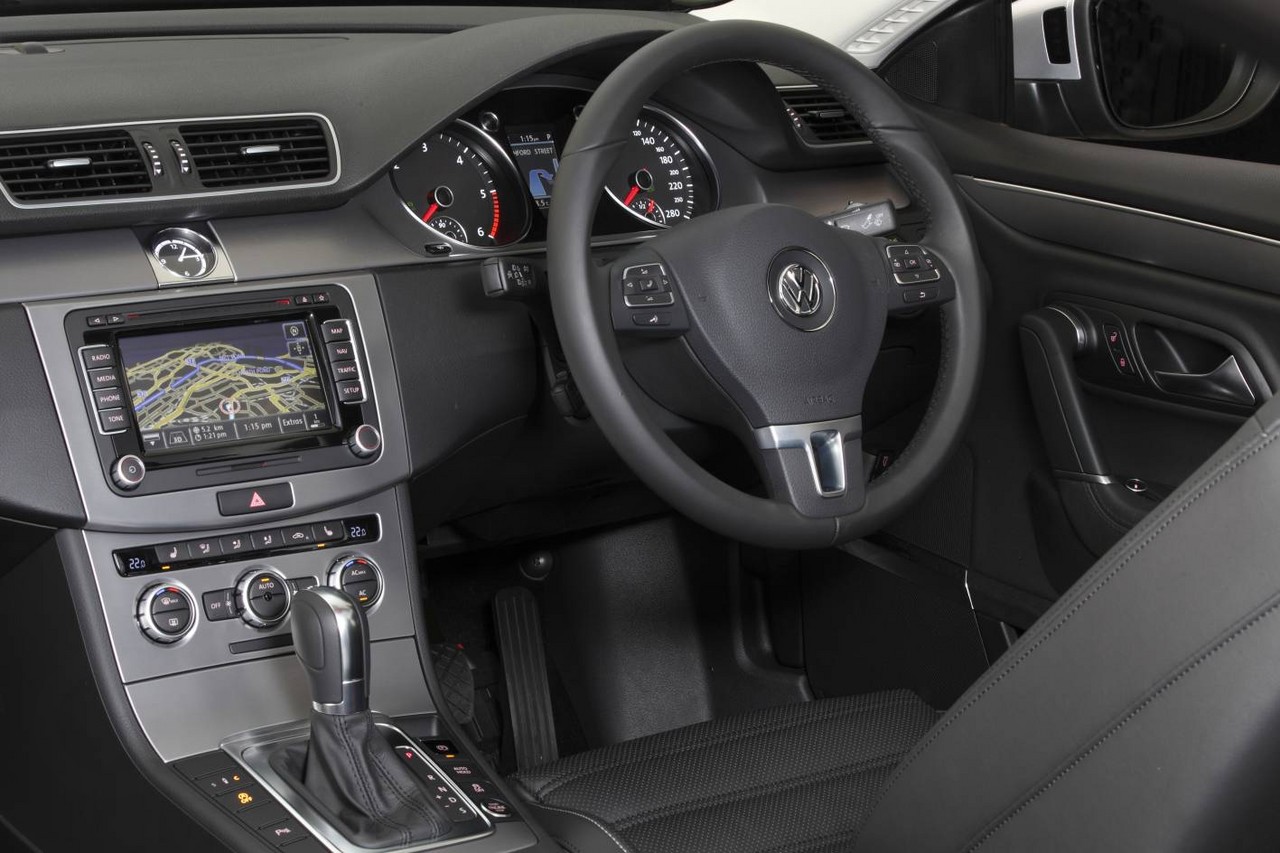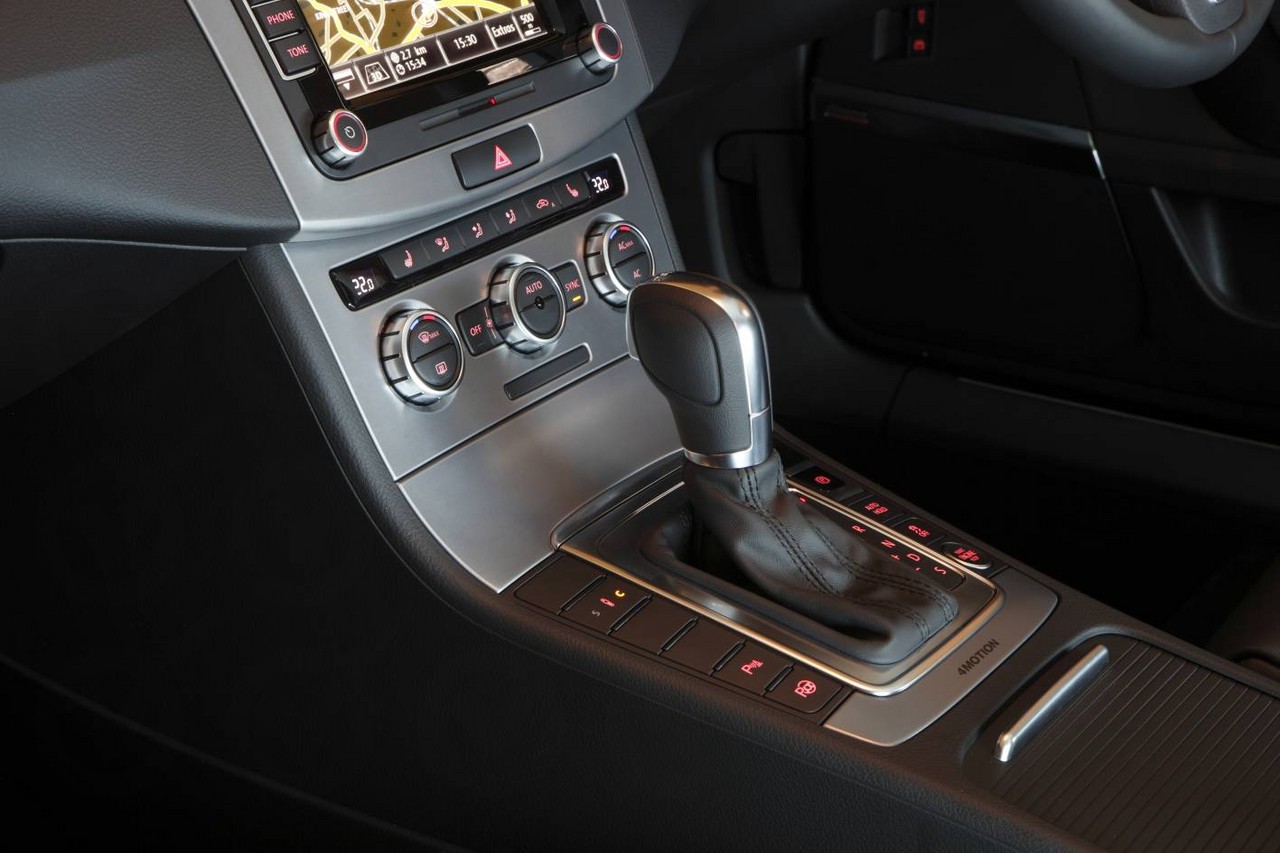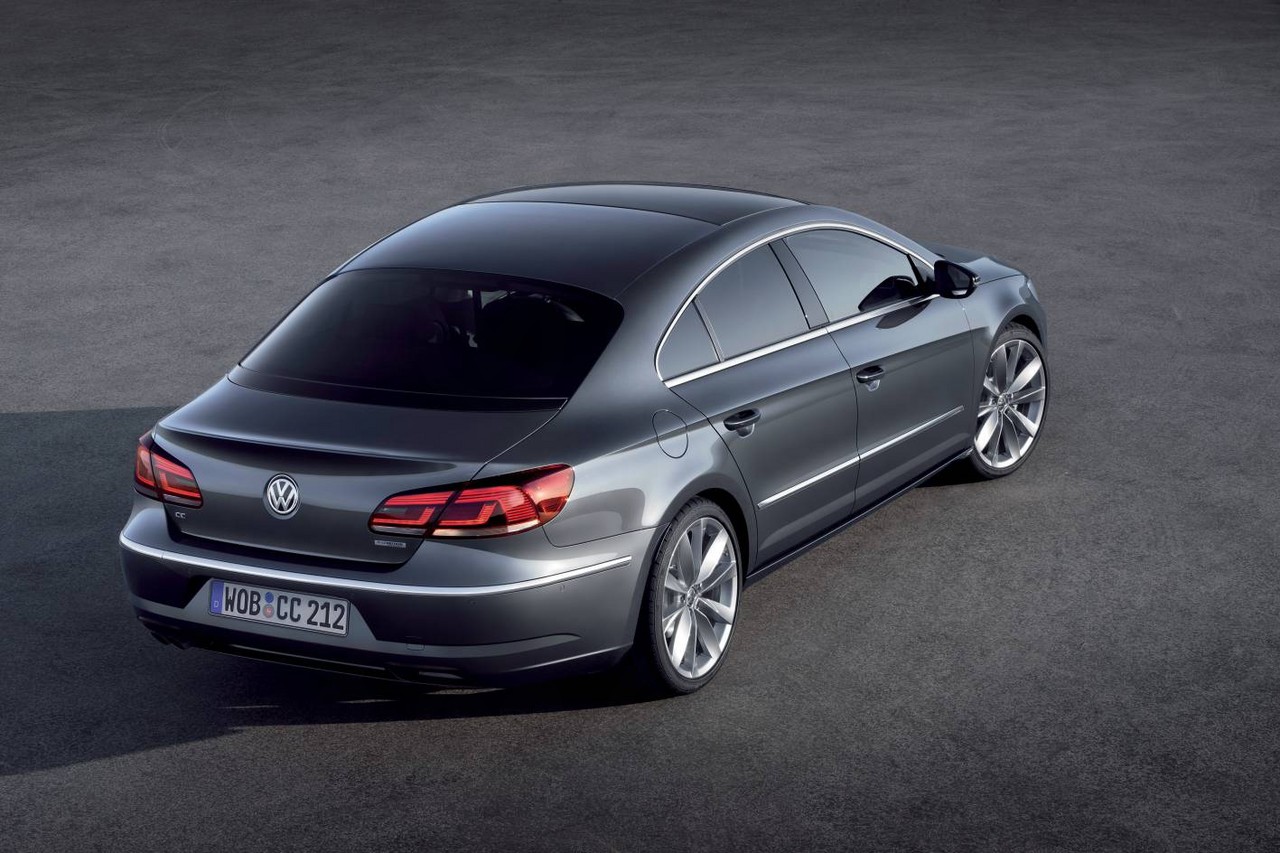
- Responsive 3.6-litre V6 engine
- Frugal 2.0-litre turbo-diesel engines
- DSG provides fast gearshifts
- High standard of interior fit and finish
- Even in Comfort mode, suspension lacks compliance for uneven surfaces surfaces
- Artifical steering feel
- Steering wheel kickback over bumps
- Poor rear seat access and headroom
- DSG hesitant when accelerating from rest
- For 3.6 FSI engine, carbon deposits can accumulate on intake valves
Overview
Released in July 2012, the Volkswagen Mk.6 CC was a four-seat sedan with a coupe-like profile. Manufactured in Emden, Germany, the VW CC was available with either a 2.0-litre turbo-diesel engine or a 3.6-litre direct-injection V6 petrol engine. Both engines were solely available with a six-speed double clutch transmission (DCT, or Volkswagen’s DSG).
Compared to its Volkswagen Mk.6 Passat CC predecessor, the CC could be identified by its three-slat front grille, redesigned headlights and LED running lights, an additional air intake with integrated ‘winglets’ beneath the front bumper, revised tail-lights, a wrap-around chrome strip for the rear bumper and stainless steel door sill plates. The CC was also more refined due to the fitment of an acoustic windscreen and additional soundproofing material in the front, side and rear quarters.
125TDI, 130TDI and 3.6 FSI engines
For the Volkswagen CC 125TDI and subsequently 130TDI, the 2.0-litre diesel engine had a grey cast iron block, an alloy cylinder head, fracture-split forged steel connecting rods, two counter-rotating balance shafts, common-rail injection (operating at 1850 bar), double overhead camshafts (belt and gear-driven), a variable geometry turbocharger, four valves per cylinder, exhaust gas recirculation, a diesel particulate filter, compression ratio of 16.5:1. This engine also had a Stop/Start function (which enabled it to shut down when the vehicle was stationary in traffic) and a free-wheel mode that decoupled the engine from the transmission when coasting to prevent engine braking.
For the Volkswagen CC 3.6 FSI, the 3.6-litre V6 petrol engine had a grey cast iron block, an alloy cylinder head, direct fuel injection (Volkswagen’s ‘Fuel Stratified Injection’, or FSI), double overhead camshafts (chain-driven), four valves per cylinder, variable intake and exhaust valve timing, and a compression ratio of 11.4:1.
Furthermore, all variants had ‘brake energy recuperation’ systems which inversely varied alternator output according to engine load.
Dimensions
The VW Mk.6 CC was 4799 mm long, 1855 mm wide, 1417 mm tall and had a 2711 mm long wheelbase; boot space was 532 litres.
Suspension
The Volkswagen CC had MacPherson strut front suspension (with lower A-arms) and independent, four-link rear suspension. As standard, the CC’s suspension featured electronically-controlled dampers (Volkswagen’s ‘Adaptive Chassis Control’) which enabled the driver to select from Comfort, Normal and Sport programs – this selection also affected settings for the electromechanical power steering.
| Variant | Drive | Years | Engine | Trans. | Peak power | Peak torque |
|---|---|---|---|---|---|---|
| 125TDI | FWD | 2012 | 2.0-litre CFGB turbo-diesel I4 | 6sp DCT | 125 kW at 4200 rpm | 350 Nm at 1750-2500 rpm |
| 130TDI | FWD | 2013-16 | 2.0-litre CFGC turbo-diesel I4 | 6sp DCT | 130 kW at 4200 rpm | 380 Nm at 1750-2500 rpm |
| 3.6 FSI | AWD | 2012-16 | 3.6-litre BWS petrol V6 | 6sp DCT | 220 kW at 6600 rpm | 350 Nm at 2400-3500 rpm |
4Motion and XDS
While the VW CC 125TDI was front-wheel drive, the CC 3.6 FSI was fitted with Volkswagen’s 4Motion all-wheel drive system. The system consisted of a Haldex coupling mounted in front of the rear axle differential, with the input shaft separated from the output shaft to the rear axle differential. As such, 4Motion system provided front-wheel drive in normal conditions, but utilised hydraulic and electronic systems to detect a loss of traction at the front wheels. The clutch plates would then engage to direct up to 50 per cent of the engine’s torque to the rear axle.
The 125TDI was fitted with Volkswagen’s ‘XDS’ electronic transverse differential lock which was integrated with the electronic stability control system. If the inside front wheel were to unload too much when cornering, brake pressure would be applied to this wheel to restore optimal traction.
Safety equipment
Standard safety equipment for the Volkswagen CC included dual front airbags, side airbags for front and rear occupants, full-length curtain airbags (i.e. for front and rear occupants), ABS, electronic brake force distribution, brake assist, electronic stability control, traction control, active front seat head restraints, front seatbelt load limiters and front and outer rear seatbelt pretensioners.
The VW CC was fitted with a fatigue detection system as standard which monitored the driver’s steering behaviour and, if there was a deviation from the behaviour, visual and acoustic warnings would be produced.
The VW CC was also available with an optional ‘Driver Assistance Package’ which included blind-spot monitoring, lane-keeping assist (via steering wheel vibrations) and radar-based adaptive cruise control with an emergency brake function at low speeds (Volkswagen’s ‘City Emergency Braking’).
Euro NCAP crash testing
In Euro NCAP crash testing , a 2005 Volkswagen Passat sedan with a 1.9-litre turbo-diesel engine (not available in Australia) received a five star adult occupant protection rating with a score of 33.99 out of 37. Volkswagen provided evidence to ANCAP that the Passat CC could be expected to provide comparable protection to the sedan tested by Euro NCAP, such that the sedan’s results were extended to the Passat CC (and therefore the CC). In the frontal offset crash test, there was a slight risk of serious leg injury for the driver due to contact with the steering column and a slight risk of serious chest injury for the front passenger. In the side impact and pole test, however, maximum points were awarded.
Features: Volkswagen CC TDI and FSI
Standard features for the Volkswagen CC 125 TDI and 3.6 FSI included 18-inch alloy wheels, an eight speaker sound system with a six-disc CD player, Bluetooth audio streaming and auxiliary inputs, satellite navigation system, dual-zone climate control air conditioning, cruise control (with speed alert), leather seats, twelve-way power adjustable front seat, a reversing camera, front and rear parking sensors, bi-xenon headlights with static cornering lights, automatic headlights, rain-sensing wipers, Bluetooth mobile phone connectivity, remote central locking, power windows and heated mirrors, a height and reach adjustable steering wheel, power-operated park brake, tyre pressure monitoring, 12 volt power outlets, trip computer, a motion-sensing alarm and an immobiliser.
The Volkswagen CC was also fitted with a new remote unlatching rear backrest whereby levers under the rear shelf enabled the right or left section of the 1/3 to 2/3 split backrests to be unlatched; the backrest would then lower automatically.
Brochure
Related links
